Master Builders: Shaping the Call to Build

Today’s Judaism is a dwelling with many rooms, built over centuries by framers who adapted, remodeled and occasionally rebuilt anew what came before.
Among today’s builders of Judaism, we – meaning us founding builders at Bayit: Your Jewish Home, and you reading this blog – all inherit a very ancient and very modern call to build. In building terms, we all stand on a foundation that a diverse group of master builders audaciously helped frame in their own ways and in their own days.
Here are 12 of those visionary framers – in a sense, a tribe of builders. Some are working today in real time, while others project their continuing influence from foundations laid in past decades or even centuries. We draw inspiration from all of their examples, with gratitude to all the creative build teams hard at work.
Clay Christensen. As modern prophet of the economics and political sociology of “disruptive innovation,” Clay offers vital leadership around design thinking and the life cycle of building itself. By its nature, the process of innovation challenges and sometimes disrupts old structures, in a continuous flow that itself will be disrupted in time. Clay’s teachings inspire our sense of why and how it’s worth taking risks to build, and not merely tolerate but rather warmly invite tomorrow’s builders and the builders that will follow them – knowing that what’s fit to build today might or might not best serve tomorrow. Clay thus also teaches about the potency (and even the necessity) of sometimes un-building.
Marcia Falk. Liturgical, poetic, scholarly, expansive and subversive, Marcia inspires our intuition that texts can be alive, grounded with deep and ancient roots while also yearning to be shaped into new structures for today and tomorrow. Marcia’s groundbreaking The Book of Blessings is a beacon for soulful re-mixing – one part living artwork, one part blueprint, one part muse – and a model for some of the best of blueprint creativity.
Rabbi Art Green. Art combines the towering insight of a world-renowned scholar with the soft and overflowing heart of a loving grandfather. As leading academician, Art’s strategic vision has shaped countless clergy building the future of Judaism – first at the Reconstructionist Rabbinical College and then at Hebrew College, helping pioneer a fiercely trans-denominational ethic in spiritual formation and Jewish expression. Art’s scholarship adapts ancient tools of Jewish mysticism to modern users, bringing neo-Hasidism’s riches to thousands. Art also rolls up his sleeves and generously offers thought partnership on designing new pathways for Jewish life.
Rabbi Jill Hammer. Jill is an empowering and innovative builder and scholar of the spirit. Jill models smooth translation across platforms – moving from the Jewish Theological Seminary to Director of Spiritual Education at Academy for Jewish Religion – New York. Jill adapts language and pathways for the sacred at “home” in the immanence of the divine Feminine expressing Herself in new liturgies, worship forms and callings to sacred service. Jill’s midrashic innovation reminds us all to hear, honor and uplift women’s voices and LGBTQ voices. Jill’s work birthing and building Kohenet reminds how Judaism can reach far back to translate forward with profound beauty and transformational power.
Rodger Kamenetz. It’d be enough to share that Rodger’s book, The Jew in the Lotus, set countless many on new paths to renewing Jewish life. We draw inspiration from Rodger’s transparency in sharing his own inner journey while chronicling the deep ecumenism of Reb Zalman’s encounter with His Holiness the Dalai Lama, and with other rabbis on that journey. Through Rodger’s eyes, we see design plans for how a large “house” can hold many disparate open spaces under a single roof. Rodger’s next adventure, forging new pathways in Natural Dreamwork, is helping pioneer and train users in new soul-exploration tools, while modeling the importance to design for felt experience alongside left-brained analytical realms.
Rabbi Mordechai Kaplan. As thought leader of what would become the Reconstructionist Movement (now Reconstructing Judaism), Kaplan continues to inspire building for today and tomorrow by teaching that the past gets a “vote, not a veto.” This distillation of his foundation of thought repudiated the Chatam Sofer (Moshe Sofer of Pressburg), whose preservationist “Anything new is forbidden by Torah” tried to kill the enterprise of building itself. Kaplan also understood that Judaism always has been porous to other cultures and influences, and that Judaism’s most vibrant future depends on wisely, frankly and boldly using the tools of cultural intersection and re-mixing.
Rabbi Benay Lappe. As founder and Rosh Yeshiva of Svara, Benay inspires with a profoundly democratic truth that anyone can be a “player”: anyone can join the multi-generational building team of Jewish life by taking the tools of learning and discourse into their own hands. Benay teaches critical lessons about the design vision of “players” on the so-called “margins” of class, gender identity and political discourse: they tend to have the clearest windows and most striking light-filled rooms in the house. Benay also offers critical reflections about inner authenticity and the pitfalls of self-censorship, and about the nature of structures when master stories “crash.” We draw inspiration from her call to design the future in ways that are “crash-flex” – adaptable to whatever next “crash” the future might bring.
Rabbi Moshe Chaim Luzzato. The “Ramchal” (1707-1746) inspires us as a bridge figure who spanned worlds of reason and faith, philosophy and metaphysics, mind and soul. His writings quietly model the transformational power of spiritual encounter, while his most frequent subject matter (Mussar) reminds us of the importance of aspiring to be ethical, upright and discerning in all that we do. Luzzato also reminds that this call of ethical discernment is a complex challenge: it asks not only individual depth but also collective process, requiring wise systems and structures to support the central ethical and character “load beams” of Jewish life.
Rabbi Marcia Prager. As dean of ALEPH’s Ordination Programs, Marcia has dedicated much of her professional life to building that program and re-shaping the systemic environment in which it continues to bend the flow of Jewish life. She and Rabbi Shawn Zevit pioneered the groundbreaking Davennen’ Leadership Training Institute, which models not only the power of spiritual encounter but also the nuts and bolts of designing holistic prayer experiences. In this and other contexts, Marcia teaches the need to become “imagineers” in envisioning a forward-leaning Jewish future.
Rabbi Deborah Waxman. As president of the Reconstructionist Rabbinical College, Deborah is leading the Reconstructionist movement into its own future with a new name (Reconstructing Judaism). Deborah inspires us with a quietly keen balance of authenticity and self-awareness, on the one hand, with skillful methods and tools of collective organization and empowerment, on the other. Deborah also helps remind that Jewish life’s best is a gerund – always reviewing, reaching, rebuilding and reconstructing.
Rabbi Shohama Wiener. Shohama, who earned the dedication to our first book (Beside Still Waters: A Journey of Comfort and Renewal, forthcoming in late 2018), modeled how to smash a glass ceiling with class. As president of the Academy for Jewish Religion – New York, Shohama was history’s first woman to lead a Jewish seminary. Not content to rest on those laurels, Shohama next became history’s first Rosh Hashpa’ah (head of spiritual direction) at a rabbinical seminary (ALEPH), modeling savvy calibration among leadership levels and roles in building the future. Thanks to Shohama’s deft leadership, and her quietly powerful and loving ways, hashpa’ah is becoming an ever more prevalent tool to build a vibrant soul-centered life.
Rabbi Zalman Schachter-Shalomi. Reb Zalman (1924-2014) modeled a master builder’s toolkit and helped develop key tools to continually design and build the Jewish future. We draw inspiration from Reb Zalman’s breadth and depth of knowledge spanning across not only the whole of Jewish life but also parallel and interlocking structures of spiritual, societal and even planetary evolution. We continually learn from Reb Zalman’s commitment to the stabilizing forces of “backwards compatibility,” his urgent call to deeply know Judaism’s “source files” before monkeying with the code, his keen focus on experience (i.e. design based on use), and his pragmatic and playful willingness to re-design. We are grateful for the lineages of learners and seekers to which Reb Zalman’s life helped give new life within and beyond fixed structures.
Who are thinkers, writers, scholars, artists, teachers, poets, mystics and others who most influence you in your desire to build the Jewish future?

Rabbi Rachel Barenblat

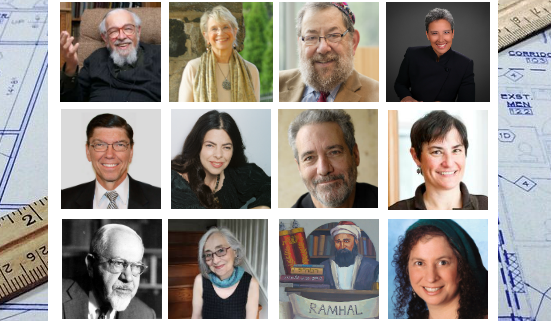

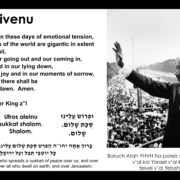

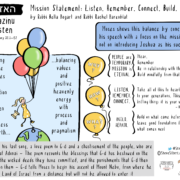
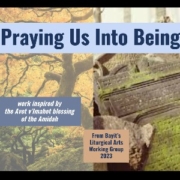
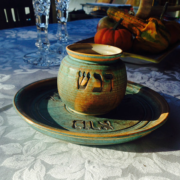


Rabbi Sheila Peltz Weinberg & Steven Weinberg, my parents
Rabbi Ezra Weinberg, my brother
Rabbi Nathan Martin, my partner
I think the entry on Art Green should be broader, startling with the havurah movement and his work as an academic in Jewish studies both at Penn and Brandeis. He spread his views and spirit in all those contexts.